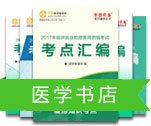Transmission
HIV transmission requires contact with body fluids containing infected cells or plasma. HIV may be present in any fluid or exudate that contains plasma or lymphocytes, specifically blood, semen, vaginal secretions, breast milk, saliva, or wound exudates. Although theoretically possible, transmission by saliva or droplet nuclei produced by coughing or sneezing is extremely rare, if it occurs. HIV is not transmitted by casual contact or even by the close nonsexual contact that occurs at work, school, or home. The most common means of transmission is direct transfer of bodily fluids either through sharing contaminated needles or sexual relations.
传播
HIV的传播必需要有与含感染细胞或血浆体液的直接接触。HIV可存在于任何含血浆或淋巴细胞的液体或渗出液中,特别是血液、精液、阴道分泌液、母乳、唾液或伤口渗出液。虽然从理论上讲有这种可能性,但在实际中,通过咳嗽或喷嚏唾液或飞沫传播的情形极其罕见。在工作场所、学校或家里的平常接触甚或密切的非性接触都不会传播HIV。最觉见的传播途径是共用注射器或性关系所带来的直接的全液交流。
Sexual practices involving no exposure to bodily fluids are safe. Other practices, such as fellatio and cunnilingus appear to be relatively, but not absolutely, safe. The greatest risk is through genital intercourse, especially anal-receptive intercourse. Sexual practices producing mucosal trauma before or during intercourse increase the risk. Use of latex condoms or vaginal barriers decreases but does not eliminate risk. Oil-based lubricants decrease the protection provided by latex condoms because they dissolve them.
无体液接触的性生活是安全的。其他如口淫或舐阴等性方式则相对而非绝对安全。最危险的是生殖器性交,尤其是肛交的接受方。性交前或性交中的粘膜破损会增加危险性。使用乳胶避孕套或子宫帽可降低但不能消除这种危险。因为润滑油会溶解乳胶,所以,也会降低避孕套的保护作用。
Infected cells or free virions can reach target cells in a new host via blood transfusion, accidental injection, or mucous membrane exposure. The role of mucous membrane inflammation is illustrated by the effect of other sexually transmitted diseases (STDs) on susceptibility to HIV infection. HIV transmission is definitely increased by chancroid and may be more likely in the presence of herpes, syphilis, trichomoniasis, and possibly other STDs.
感染细胞或游离病毒体可经由输血、意外注射或粘膜暴露到达新宿主的靶细胞。粘膜炎症所起的作用与其他性传病(STD)医学教.育网搜集和HIV感染易感性的作用相同。软下疳肯定会增加HIV的传播性,单纯疱疹、梅毒、滴虫病和其他STD感染更可能引发HIV传播。
Transmission of HIV by needle-stick injury, estimated at about 1/300 incidents, is much less frequent than transmission of hepatitis B, presumably because of the relatively lower number of HIV virions in the blood of most infected patients. Risk of HIV transmission appears to be increased by deep wounds or injection of blood, such as when hollow-bore needles containing blood penetrate the skin.
由针刺损伤导致的HIV传播发生率估计为1/300,远低于乙型肝炎,这可能是由于大多数感染者血液中的HIV病毒数量相对较少的原故。深部创口或注入血液,如含有血液的中空针头刺入皮肤,都可增加HIV的传播危险。
Use of enzyme-linked immunosorbent assay (ELISA) to screen blood donors has vastly reduced the risk of acquiring HIV by transfusion. However, persons in the early stages of HIV infection, who have not yet mounted an antibody response, may have transiently negative ELISA and Western blot results while yielding positive results for HIV p24 antigen in plasma. These persons may account for the very low, but continuing, risk of transfusion-associated HIV infection (estimated at between 1/10,000 and 1/100,000 per unit transfused). Currently mandated screening for both antibody and p24 antigen may further reduce this risk.
用酶联免疫吸附试验(ELISA)方法对供血者进行筛检,已大大降低了输血引起的HIV感染危险。不过,HIV感染早期的供血者,在尚未产生抗体应答时,他们的ELISA和Westernblot结果暂时均为阴性,而血浆HIVp24抗原检查则为阳性。这些供血者可能造成非常低、但依然存在的输血相关性HIV感染危险(估计介于1/1万~1/10万之间)。近来采用同时进行抗体和p24抗原筛检的方法可进一步降低危险性。
Prevention
Multiple strategies are being developed to induce protective immunity in persons not infected with HIV. Immunogens include attenuated live and whole killed HIV, genetically engineered HIV proteins and peptides (e.g., from the viral envelope), and vaccinia virus genetically modified to express HIV viral proteins. These efforts are hampered by the lack of a measurable marker of protective immunity, such as the neutralizing antibody engendered by polio vaccine, or of a convenient animal model. Nevertheless, vaccines continue to be developed and tested for safety and immunogenicity.
传播的预防
正在研制多种方法来诱导未感染HIV者的免疫保护功能。免疫原包括减毒HIV活病毒或完全灭活HIV病毒,因工程HIV蛋白和肽(如取自病毒包膜的),和基因修饰后表达HIV蛋白质的牛痘病毒。这些工作都因缺少可计量的免疫保护标志物而受阻,如灰髓炎疫苗能产生中和抗体;另外也没有合适的动物模型。尽管如此,疫苗研究仍在进行。并在作安全性和免疫遗传学试验。
All pregnant women should be offered a test for antibody to HIV. HIV-infected women should be advised to consider deferring pregnancy at least until management of HIV in pregnancy is better studied. The risk of transmission in utero, intrapartum, or postpartum transmission to the fetus is estimated to be 30 to 50%, but zidovudine (ZDV or AZT) alone reduces intrapartum infection by 2/3, and combinations of drugs may be more effective. Given the low, but real, risk of transmission even with treatment and the uncertainty of the effects on the fetus of drugs needed for their own health, termination of pregnancy may be an alternative for many HIV-infected pregnant women.
所有妊娠妇女都应进行HIV抗体试验。应劝告HIV感染女性推迟怀孕,至少要等到妊娠期HIV处理已有了更好的研究结果后。据估计,胎儿在宫内、产程中或产后的传播危险率为30%~50%,但单用齐多呋啶(ZDV或AZT)即可使分娩期传播减少2/3,联合用药效果会更好。虽然治疗后的传播危险很低,但也确实存在,而且这些胎儿健康所必需的药物对胎儿的影响也不确定,因此,终止妊娠也可能是许多HIV感染孕妇的选择措施之一。
Confidential testing for antibody to HIV should be offered to anyone requesting it, but only in conjunction with pretest and posttest counseling. Persons who are at high risk for contracting HIV infection--even those with negative HIV antibody test results--should not donate blood or organs for transplantation because of the small risk they may have been recently infected and be infectious but antibody-negative.
应向每一个请求者提供保密的HIV抗体检测,并与检测前后的咨询服务相结合。HIV感染高危者――即使是那些HIV抗体检测阴性的人――都不应献血或捐献移植器官,因为他们仍然存在近期感染及具有传染性而抗体呈阴性的可能性。
Isolation of hospitalized patients with HIV infection is unnecessary, except when their complicating infections (e.g., suspected or proven TB) are communicable. Surfaces contaminated by blood or other body fluids should be cleaned and disinfected. HIV is readily inactivated by heat and many disinfectants, including peroxide, alcohols, phenolics, and hypochlorite. The body fluids and tissues of HIV-infected patients should be handled with extreme care.
没必要隔离感染HIV的住院病人,除非他们得有传染性并发感染(如怀疑或证实有结核)。血液或其他体液污染表面应进行清洁和消毒。HIV容易通过加热和许多消毒剂灭活,如过氧化物、酒精、酚和次氯酸。处理HIV感染者的体液和组织时应极其小心。
Medical and dental professionals should wear gloves when examining all patients if contact with mucous membranes or other wet surfaces may occur. Because needle-stick accidents are common, health care workers must be taught how to avoid them.
医生和牙医在检查所有患者时,如需接触粘膜或其他湿面,一定要戴手套。由于针刺意外经常发生,因此,应教育保健工作者如何避免意外。
Postexposure prophylaxis with immediate antiretroviral therapy after penetrating injuries involving HIV-infected blood (needle sticks) or heavy mucous membrane (eye or mouth) contamination is believed to reduce transmission. Combinations of a protease inhibitor with two nucleoside reverse transcriptase inhibitors are currently recommended for postexposure prophylaxis of relatively high-risk exposures. Zidovudine (ZDV or AZT) appeared to reduce risk of transmission after needle-stick injuries in one study, which provided the only evidence that prophylaxis works. Because of the low risk of infection for most injuries, controlled prospective studies of the effectiveness of prophylaxis are not practical. Cancers or birth defects from the brief exposures to these drugs have not been found in the small numbers of otherwise healthy persons who have used ZDV for this purpose. Because some women in early pregnancy will be offered postexposure prophylaxis before their pregnancy is suspected or confirmed, special caution must be exercised in treating potentially pregnant women. Additional problems arise when the source or HIV status of blood is unknown, but identification of the source and testing of that person for HIV infection should be vigorously pursued.
现已证明,在贯通伤接触HIV感染血液或严重的粘膜医.学教.育网搜.集整理(口腔或眼睛)接触后,立即用抗逆转录病毒药物作暴露后预防治疗可以能降低传播率。对相对高危暴露,目前推荐用一个蛋白酶抑制剂结合两个逆转录酶抑制剂作暴露后预防治疗。有一项研究发现,AZT能降低针刺后的传播危险,――这也是证明预防有效的唯一一次研究。由于大多数针刺的感染危险性低,预防效果的预期控制性研究也并不实用。在其他不部分HIV感染而使用ZDV、又无其他疾病的人员中,尚未发现短期用药的致癌和致畸现象。因此,有些妊娠早期妇女在怀疑或证实怀孕前需要进行预防性治疗,在治疗这些潜在的孕妇时就应特别注意。血液来源或血液HIV状况不明会引发其他许多问题,因此确认血液来源及对供血者进行HIV检测丝毫不能松懈。










 扫一扫关注
扫一扫关注
 扫一扫立即下载
扫一扫立即下载